What’s Your Decorating Style? Here’s Everything You Need to Know about Interior Design Styles
Are you looking to freshen up the look of your home or want to spruce up your interior design style but don’t know where to start? With so many choices, styles and decor options, it can feel overwhelming.
Maybe you’ve tried an online search to find out what you like, but terms like “desert modern”, “cottagecore” or “monochromatic” mean absolutely nothing to you.
I hear you. You’re not looking to learn a new language, you just want to find the look that’s right for you!
Whether you are longing to create a more sleek aesthetic, a timeless gem or a charming, fun interior, there is a style to suit every taste and preference. You just need to figure out what your interior design style is.
What Is an Interior Design Style?
An interior design style is the basic foundation that defines the character and ambiance that is aimed to be achieved in a space. Every interior design style has its own set of guiding principles that influence the design goals and the methods used to achieve them.
Through unique design elements such as colors, finishes, and types of materials, a specific aesthetic can be achieved, allowing the creation of a space that reflects the dweller’s personality, values and way of life.
But is it really important for our personal space to reflect who we are? Actually, it is!
Recent studies have highlighted the significant impact our environment has on our emotions, behavior, and physical well-being. It has actually been proven that home aesthetics play a crucial role in influencing our daily emotional, psychological, and even physical health!
Therefore, by decorating with purpose and incorporating features that resonate with our identity, values and lifestyle, we are actually transforming our living spaces into sanctuaries that can enhance our overall well-being and strengthen our connection to our surroundings.
Interior Design Styles Defined
Understanding different interior design styles can help us uncover personal preferences and craft spaces that reflect our individuality.
By familiarizing ourselves with the distinct techniques used to achieve each style’s design goals, we can apply this insight to guide our selection of design elements like paint colors, furnishings, and decor.
With a deep understanding of a particular decorating style, we can also deviate from conventions to create a truly distinctive space.
As you can imagine, there are countless possibilities when it comes to selecting an interior design style. So, to make things easier, I’ve decided to group them into 4 categories: minimalist, maximalist, conventional and fusion.
Now, I’m sure that any interior designer reading this has probably already started cringing, but hear me out!
I am aware that some of these categories are already interior design styles of their own. However, grouping them as such will allow readers to get some structure in a myriad of possibilities and terms they may not yet understand.
So, without further ado, here is everything you need to know about the fundamentals of interior design styles and the 13 most popular interior design styles for 2024.
13 Most Popular Design Styles
Minimalist Interior Design Styles
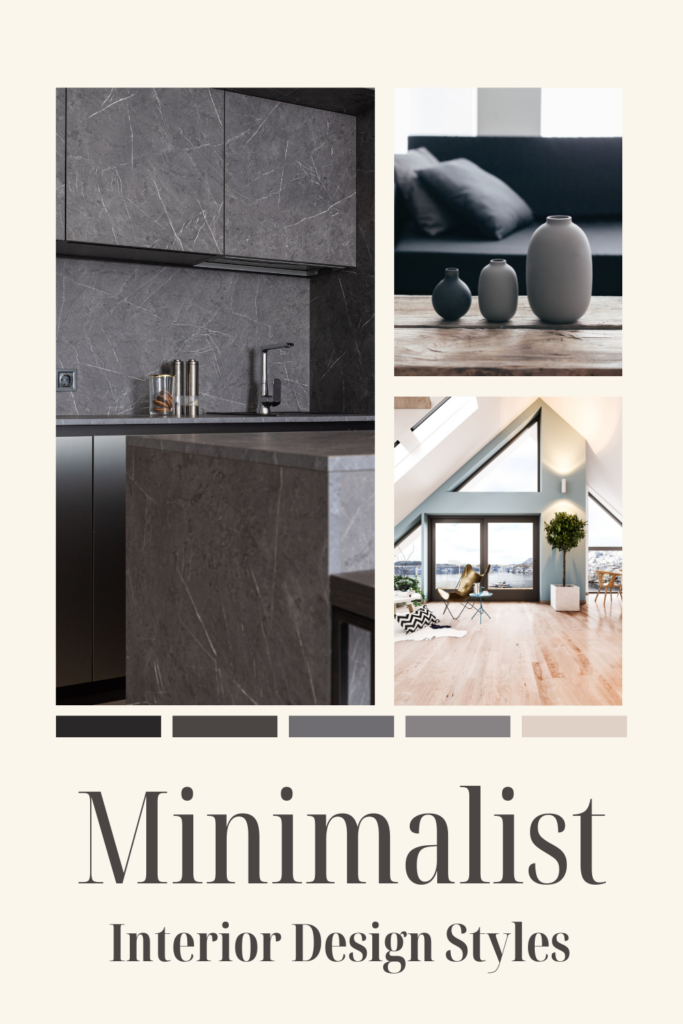
I’m grouping the first 3 interior design styles under the “minimalist” category. These are:
Minimalism is a type of abstract art that emerged in the United States during the 20th century. It is characterized by artworks made up of basic geometric shapes.
Now, although minimalism is not directly related to the following interior design styles, it does share the principle of reducing the aesthetic elements in their purest form: clean, simple lines exempt of unnecessary embellishment.
Here’s what comes out of this idea:
1. Modern Interior Design
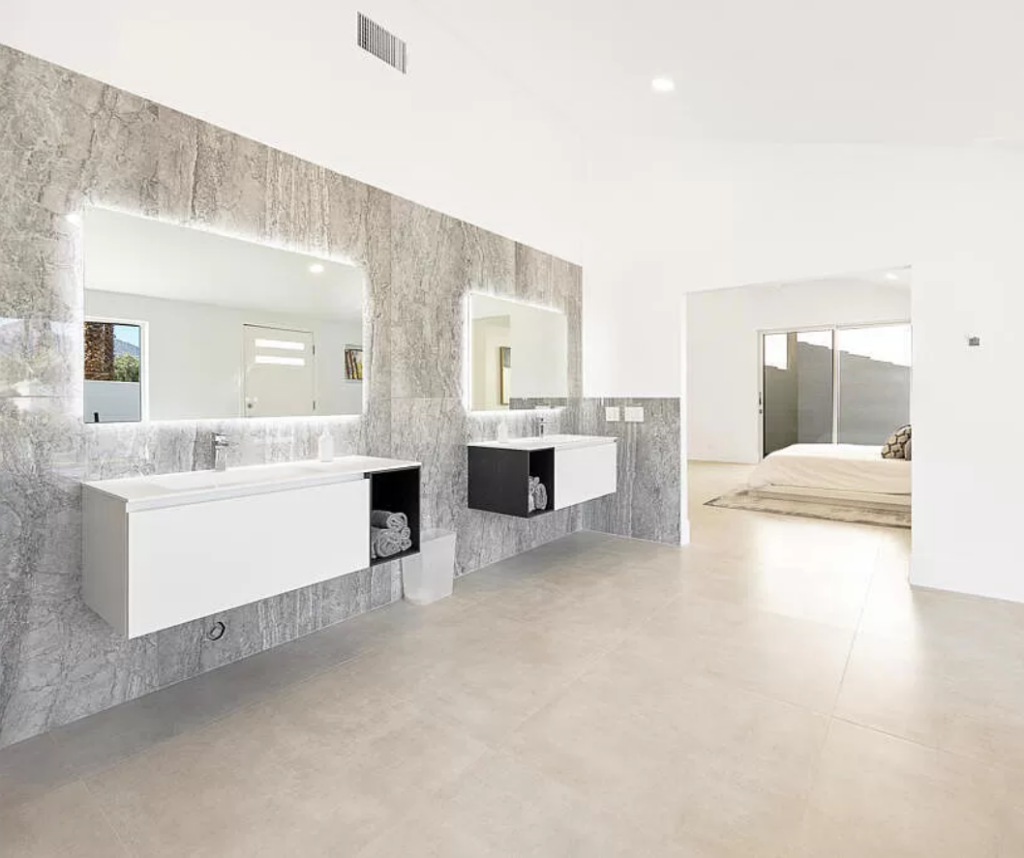
The History of Modern Interior Design
You can trace the origins of modern interior design to the Bauhaus German school of design and subsequent art movement in the early 20th century.
Bauhaus emphasized the combination of form and function, seeking to unify art, craft, and technology to create practical yet aesthetically pleasing objects. The movement prioritized simplicity, functionality, clean lines, and geometric shapes.
Modern Interior Design Style Today
Modern interior design incorporates clean lines, minimalist furniture, and a neutral color palette to create a sleek and contemporary aesthetic. Taking the expression “less is more” to a next level, the focus in modern design is on simplicity and functionality, nothing more. Sticking as much as possible to a monochromatic palette, the emphasis is on open spaces and natural light, rather than color.
Key elements of this sleek aesthetic include simple geometric shapes (square, rectangle and circle), natural stones, metal accents, with a touch of textures to add visual interest. Technology integration and sustainable materials are also often incorporated in the space to enhance the overall modern design concept and its nod to technological progress.
Modern Design Is Your Thing If…
- Natural materials such as wood, stone, leather or glass are a must in your space.
- You prefer a unified neutral color palette, staying away from any kind of bold color.
- Open floor plan that is free of any kind of clutter, knick-knacks or accessories is the only option for you.
- You like clean lines and low, multi-functional furnishings.
- Integrating technology into your living space is your heaven.
2. Mid-Century Modern Design
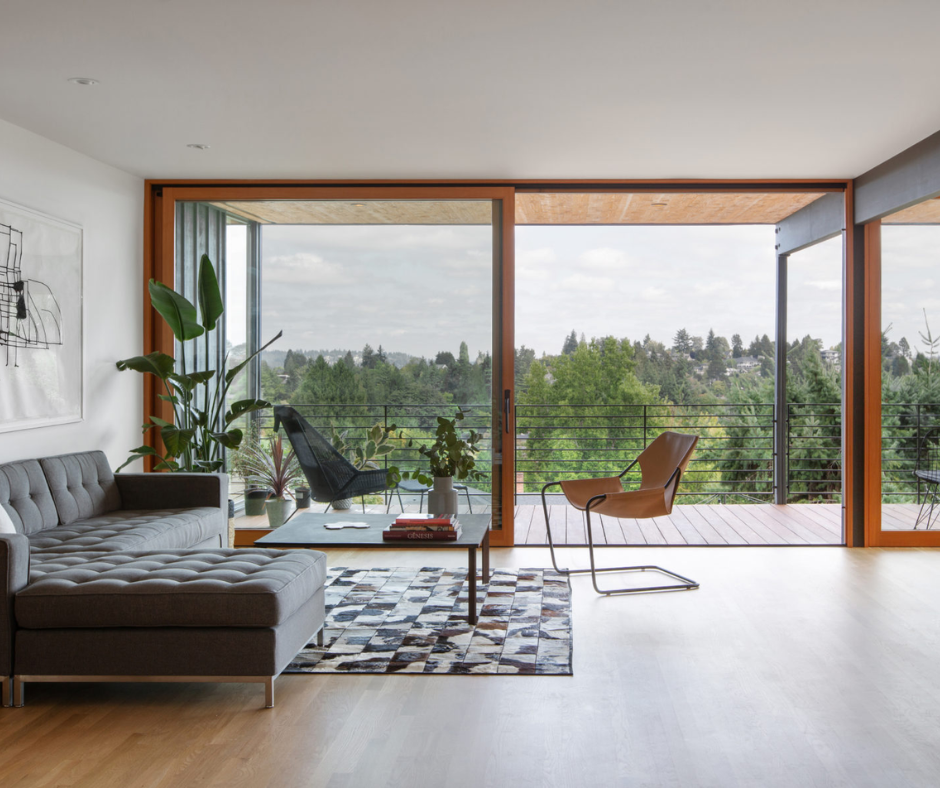
The History of Mid-Century Modern Design
Mid-century modern interior design is a style that emerged in the United States in the mid-20th century, as a response to the realities of a post-World War II society.
The end of World War II gave rise to a wave of prosperity, technological progress, mass production and consumerism. With this age of expansion, came suburbanization, where affluent families were moving away from the city and into new suburban constructions.
Architects and designers needed to merge this new age of mass production with the increasing sense of American pride, thus giving rise to the mid-century modern design style.
Mid-Century Modern Design Style Today
Mid-century modern design is characterized by its emphasis on aesthetic functionality and creating a stylish balance in the home.
Its minimalist approach to decor does not sacrifice the simple elegance that comes with a mid-century modern aesthetic, finding beauty in elements such as natural, rich woods, bold colors, and complex geometric patterns (think hexagon-tile backsplash). Furnishings often feature tapered legs, sleek surfaces, and innovative materials like plastic and metal.
One of the key features of mid-century modern design, is the use of open floor plans that flow seamlessly with the outdoors, blurring the boundaries between indoor and outdoor spaces.
Overall, mid-century design seeks to create a harmonious blend of form and function, evoking a sense of timeless sophistication and modernity to the living space.
Mid-Century Modern Design Is Your Thing If…
- Mixing materials and textures such as different types of rich colored woods, glass, metals, and even plastic is your kinda thing.
- You prefer simple lines over unnecessary extra features or embellishment.
- “Function over beauty” is your interior design motto.
- You melt for that bold pop of color or geometric pattern in an otherwise toned-down space.
3. Scandinavian Design
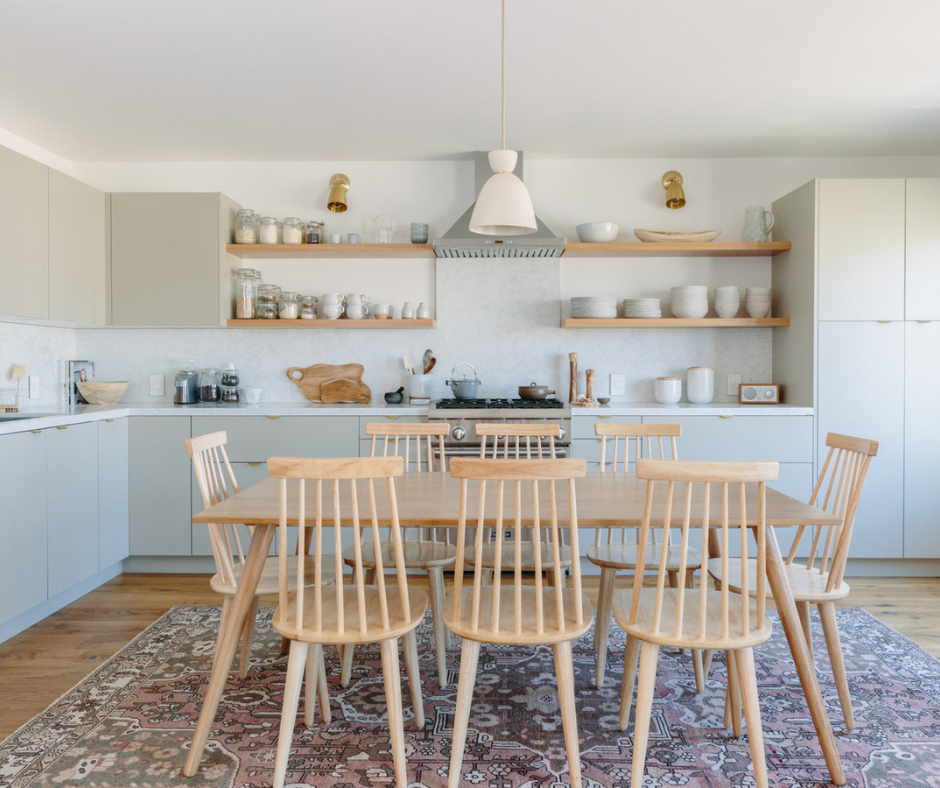
The History of Scandinavian Design
Scandinavian design is a flagrant example of how culture and our natural environment can influence interior design.
Like in other parts of the world, the Nordic countries of Denmark, Finland, Norway, Sweden, and Iceland were also influenced by the minimalist ideologies of the early 20th century.
However, due to their long, dreary winters, they needed to reflect as much sunlight as possible indoors.
This resulted in white, light and airy feel to the design. Moreover, Nordic lifestyle rituals such as hygge, rendered the aesthetic a lot more cozy than its cousin, the modern interior design style.
Scandinavian Interior Design Style Today
Cozy simplicity, minimalism, and functionality are the terms that best characterize Scandinavian design.
Like its cousins Modern and Mid-century modern designs, “Scandi” also emphasizes clean lines and natural materials. However, its focus is on creating spaces that are both aesthetically pleasing and practical, with an emphasis on light and a sense of airiness.
Striving to be a timeless aesthetic, Scandinavian design principles prioritize quality craftsmanship and sustainable practices, resulting in furniture and decor that are both beautiful and durable.
This design style has gained popularity worldwide for its ability to create inviting and cozy interiors that promote a sense of calm and tranquility.
Scandinavian Interior Design Is Your Thing If…
- When you get home, you want to feel like your space is giving you a big hug.
- You like simple, clean lines, but don’t want your space to feel stark, cold and uninviting.
- Natural elements are and will always be a big part of your design aesthetic.
- Bright and airy is the only option for you.
Maximalist Interior Design Styles
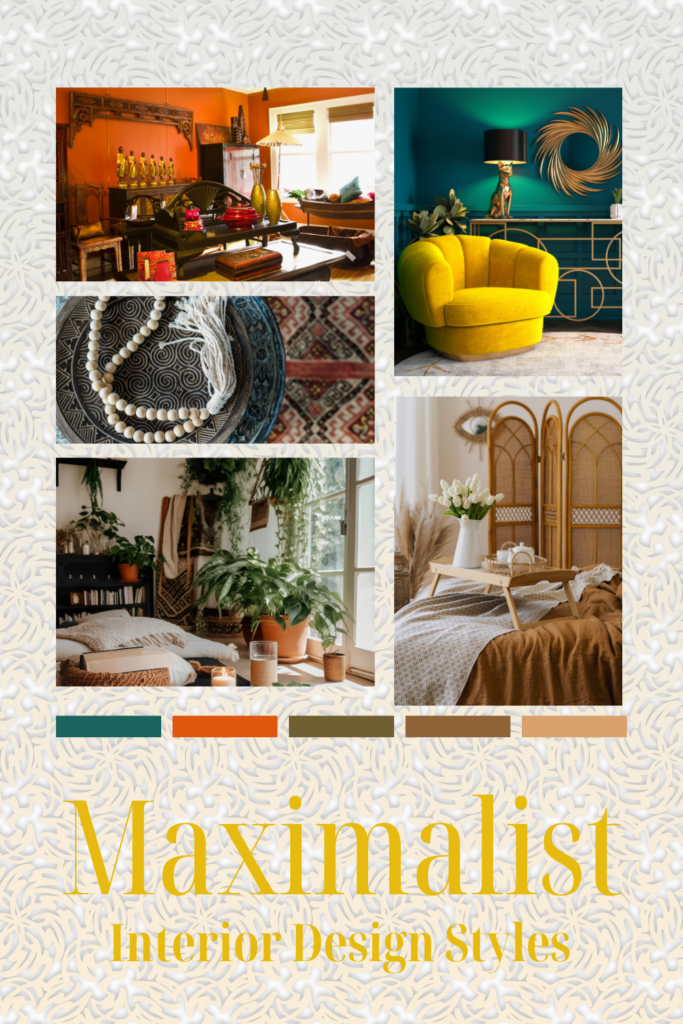
Now that we’ve seen a few interior design styles that follow minimalist ideologies, let’s look at their opposites: the maximalist design styles.
Maximalist design has popped up throughout history any time the extremely wealthy wanted to display their riches through overelaborate, ornate decor.
The rise of the bourgeoisie in France is a great example of this. A 19th century bourgeois home needed to demonstrate high class and riches in order for the family to maintain their social status. As a result of this, elaborate details and complex patterns were preferred because they looked expensive.
Although maximalist interior design is actually a design style on its own that has made a comeback in recent years through bold colors, playful forms and highly individual design, we’ll focus on its popular cousins:
4. Bohemian Interior Design
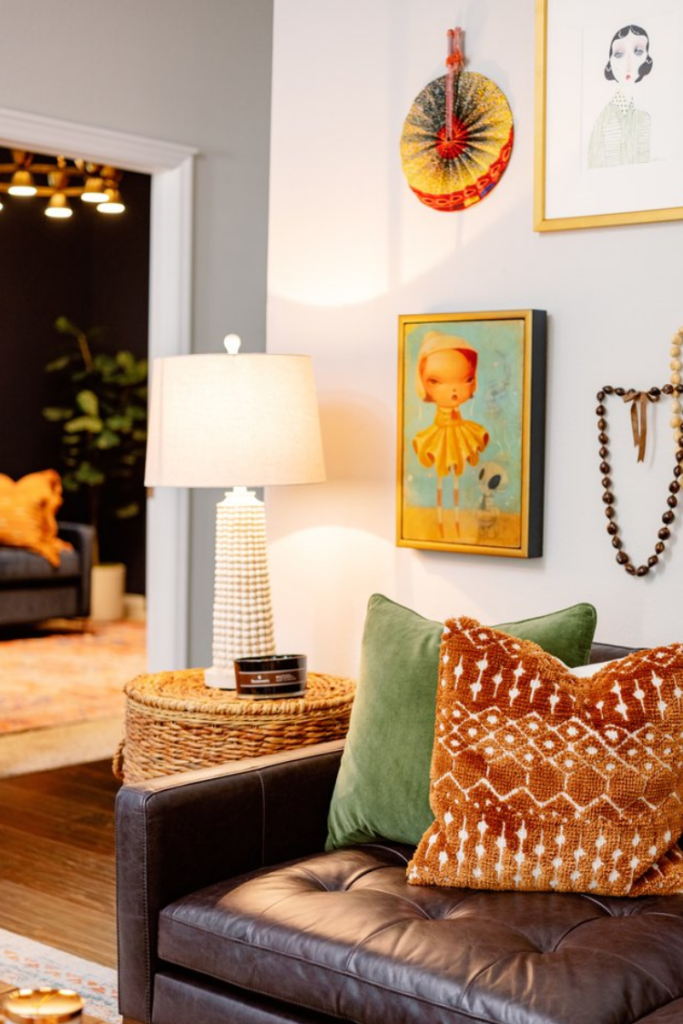
The History of Bohemian Design
The bohemian or “boho” interior design style began in France in the 1800s, as a backalsh to the lavish realities of the bourgeoisie.
It was an age of promiscuity and flamboyance for Parisian artists and non-conformists, and their eccentricity reflected in their interiors as well. Highly influenced by the Romani people (gypsies), they valued individuality, unconventional viewpoints and lots of creativity.
The “boho” style resurfaced about a hundred years later in the late 1960s to challenge the societal norms of consumerism. Although still influenced by the design elements originally found in the 19th century Parisian bohemian style, this “new” bohemian style also integrated elements of Asian, Latin American and African cultures and design.
Bohemian Interior Design Style Today
Vibrant and unique, bohemian interior design embraces a free-spirited, “anything goes” kind of aesthetic.
The style is characterized by combining colors, patterns, and textures in intentionally mismatched elements that somehow “go together”.
Through the use of vintage furniture, global accents, and handcrafted elements, this style creates a relaxed and inviting atmosphere. Natural materials, such as wood and rattan, are often featured alongside plants and greenery to bring a sense of nature indoors.
The use of floor cushions, layered rugs, and oversized throws contributes to the ultra laid-back feel of this style.
A final touch of personality through artwork and displayed personal souvenirs add that creativity oh-so encouraged in the bohemian design aesthetic.
Boho Design Is Your Thing If…
- You dream of letting your imagination drive the design choices in your home, no matter how unconventional the result may be.
- Blending different patterns and textures that do not traditionally go together is your kinda thing.
- Experimenting with bold color palettes does not intimidate you.
- You’ll choose handcrafted over factory-made every time.
- Artificial plants or plastic decor will never enter your home.
- Vintage furnishings are a must in your space.
5. Eclectic Interior Design
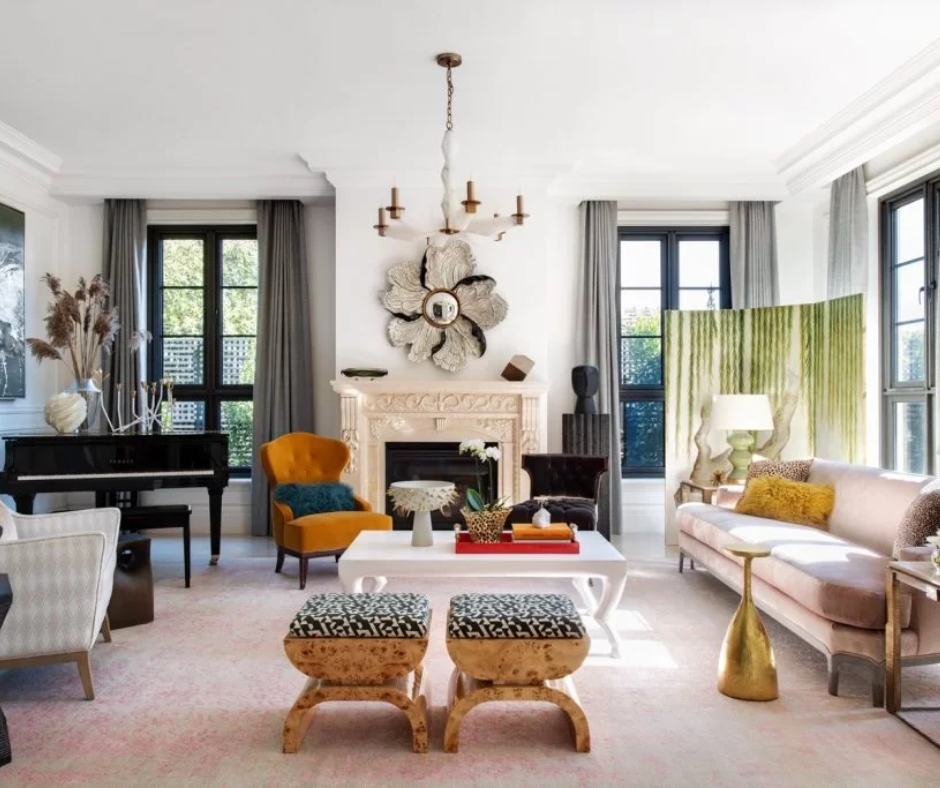
The History of Eclectic Interior Design
Eclecticism, from the Greek eklektikos which means “choosing the best”, is the approach of combining the principals of several doctrines or ideologies to create a new system of thought.
In architecture and, consequently, in interior design, eclecticism first emerged during the Victorian era. The movement involved combining elements from past historical styles to produce something fresh and unique.
Also, colonialism played a significant cultural role during the Victorian era. The literature of the time sparked a widespread interest in exotic goods from faraway places. This led to the integration of imported products from China, India, and Persia into home decor collections.
Eclectic Interior Design Style Today
Eclectic design combines various elements, patterns, and textures from other interior design styles to create a unique and personalized space. It involves mixing different aesthetics, eras, and color schemes to achieve a harmonious, yet visually stimulating look.
Eclectic interiors often feature a blend of vintage and modern pieces, unexpected decor accents, and a bold use of patterns and colors. This style allows for creative freedom and individual expression, resulting in a vibrant and dynamic living environment that showcases the dweller’s personality and refined taste.
Eclectic VS Bohemian Design
Although often compared to the bohemian design style, eclectic design involves intentionally collecting and blending colors, patterns, and pieces to achieve a carefully curated look. In contrast, bohemian design typically involves utilizing existing mismatched items to create an aesthetically pleasing space.
Eclectic Design Is Your Thing If…
- You like to incorporate multiple design styles into your space.
- You’re all about rich colors, mixed with a variety of patterns and textures.
- Integrating timeless, vintage pieces in your space is a must.
- To you, art is a worthy investment.
- As a world traveler, you love to incorporate your international flair into your decor.
6. Art Deco Interior Design
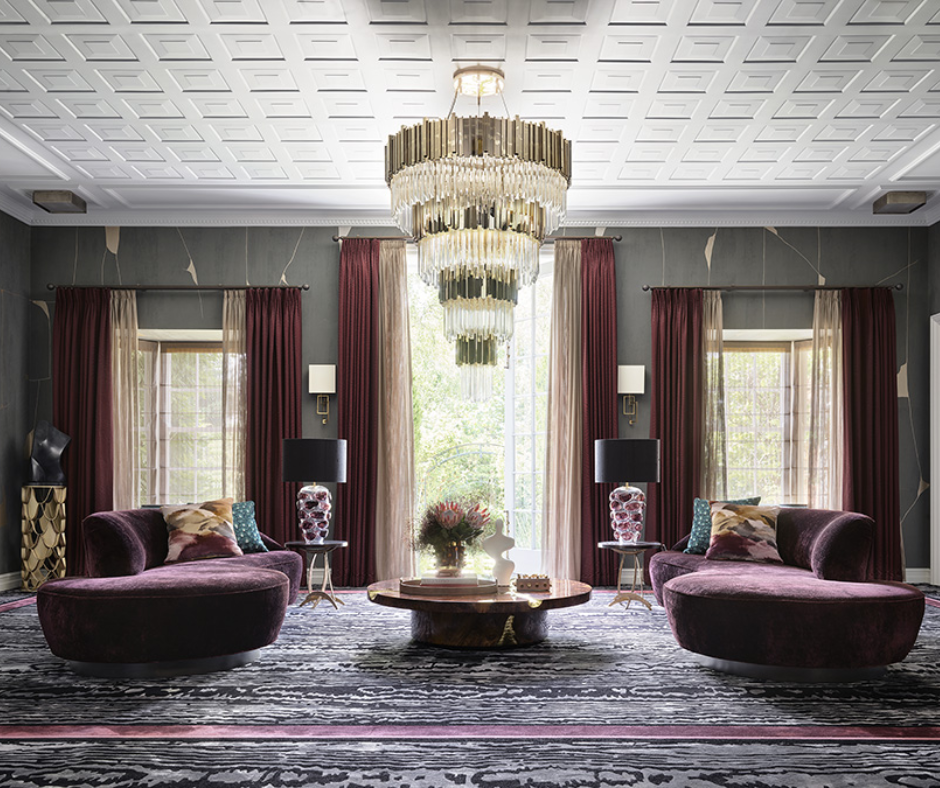
The History of Art Deco Design
Art Deco was all the rage in the early 20th century, but it was most popular during the 1920s and 1930s. The style drew inspiration from various art movements and design trends of the time, including Cubism.
The Art Deco aesthetic influenced architecture, interior design, fashion, and visual arts. It was characterized by geometric shapes, vibrant colors, and a focus on luxury and modernity.
Art Deco design fell out of style in the 50s, making space for the mid-century modern trend. The style is however gaining back its popularity in recent years with a more contemporary take on its ultra glamorous and lavish beginnings.
Art Deco Interior Design Style Today
Dramatic glamor and sophistication are what best describe the Art Deco aesthetic. Through bold geometric shapes, luxurious materials, rich colors, metallic accents, and intricate patterns, this style has everything it needs to create a space worthy of a glamorous, old-Hollywood movie set.
Art Deco interiors often feature sleek furniture, glossy finishes, and dramatic lighting to create a sense of opulence and modernity. Both elegant and irresistibly striking, this design aesthetic is all about striking a balance between generating an outstanding visual impact and keeping a focus on symmetry.
Art Deco continues to be a popular choice for those seeking a chic and timeless interior style.
Art Deco Design Is Your Thing If…
- You’re into the finer things in life.
- Chic, luxurious and shiny are your go-to words when defining your space.
- A large, statement chandelier does not intimidate you.
- You want your space to feel sexy and sophisticated.
- Bold, geometric patterns make you weak at the knees.
- You’ll choose silk and velvet over linen any day of the week.
Conventional Interior Design Styles
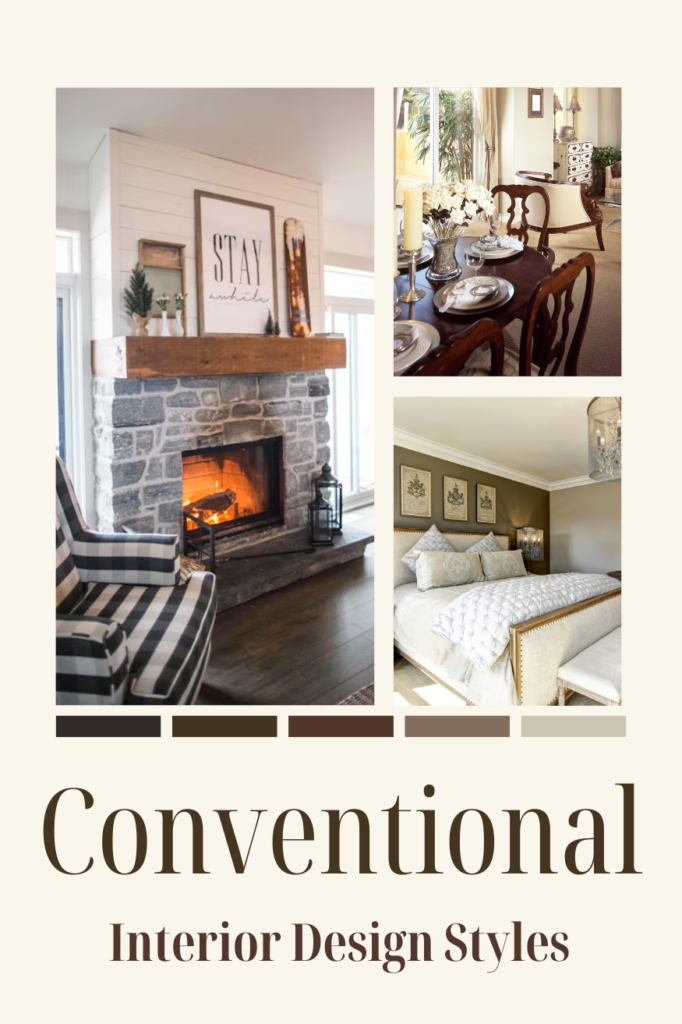
Unlike the design styles in the minimalist or maximalist categories, the design styles in the category that I like to call “the conventional interior design styles” are not looking to break from the traditional standards of aesthetics. Rather, they aim to create a beautiful ambiance by relying on long-established principles and methods of interior design.
The design styles in this category include:
Traditional Interior Design
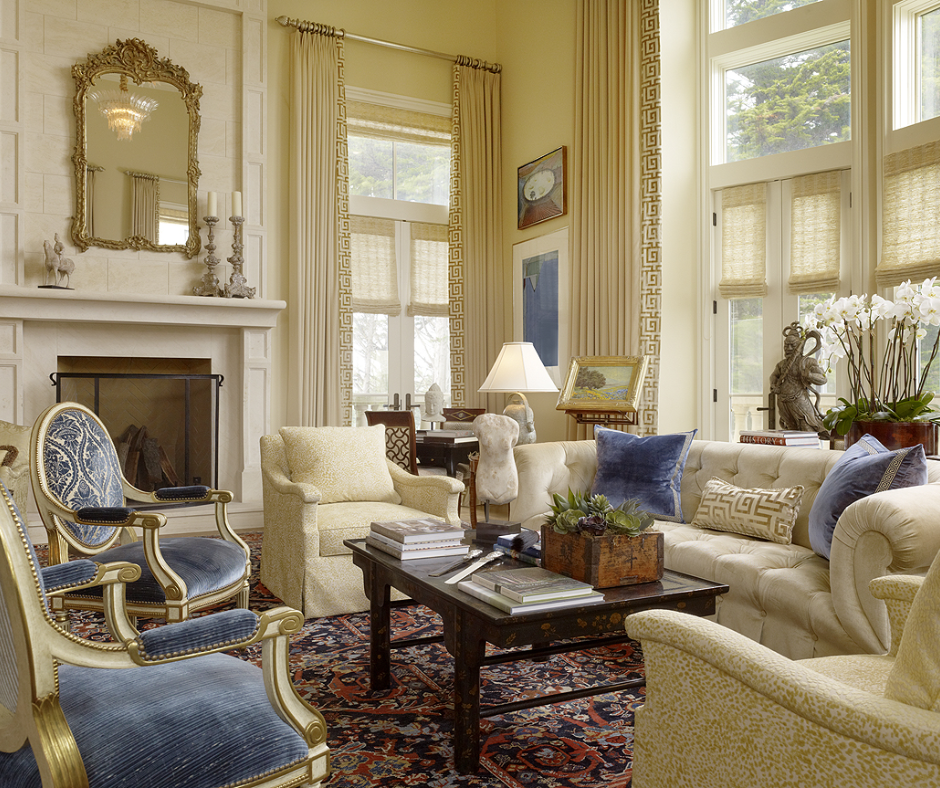
The History of Traditional Interior Design
Howard Pyle once wrote: “Art is the expression of those beauties and emotions that stir the human soul.” And like he so eloquently said, humans have always found meaning and emotion in beautiful things. Even in ancient times, people filled their home with aesthetically pleasing objects that inspired them.
Traditional interior design is influenced by this idea, tracing its roots all the way back to ancient civilizations such as Mesopotamia and Egypt, where both functionality and ornate elements were put together to create impressive living spaces.
From the rich tapestries of the Renaissance period to the intricate wood carvings of the Victorian era, traditional design has evolved over time to reflect changing tastes and cultural influences.
Today, traditional interior design is influenced by the classical architectural features of 18th and 19th century design. These features include luxurious fabrics and furniture pieces that exude elegance and sophistication.
Traditional Interior Design Style Today
Traditional interior design is all about blending classic elegance and timeless beauty with a feeling of serenity and perpetual calm. Its embrace of history and heritage does not prevent it from creating a warm and inviting space.
How does it achieve this perfect balance? By combining the sophistication found in rich fabrics, ornate patterns, and antique furniture, with the sense of collected effect caused by neutral color palettes, dark wood finishes and details like molding and trim.
Traditional Interior Design Is Your Thing If…
- You prefer investing in furniture that will last you a lifetime.
- Trends and fads are not your thing. You like your home to feel timeless.
- Architectural details such as crown molding, columns, and lighting coves make you weak at the knees.
- Rich, dark hardwood floors are a must in your home.
- Sophisticated yet familiar is how you want your home to feel.
- Symmetry is mandatory in your space.
Rustic Interior Design
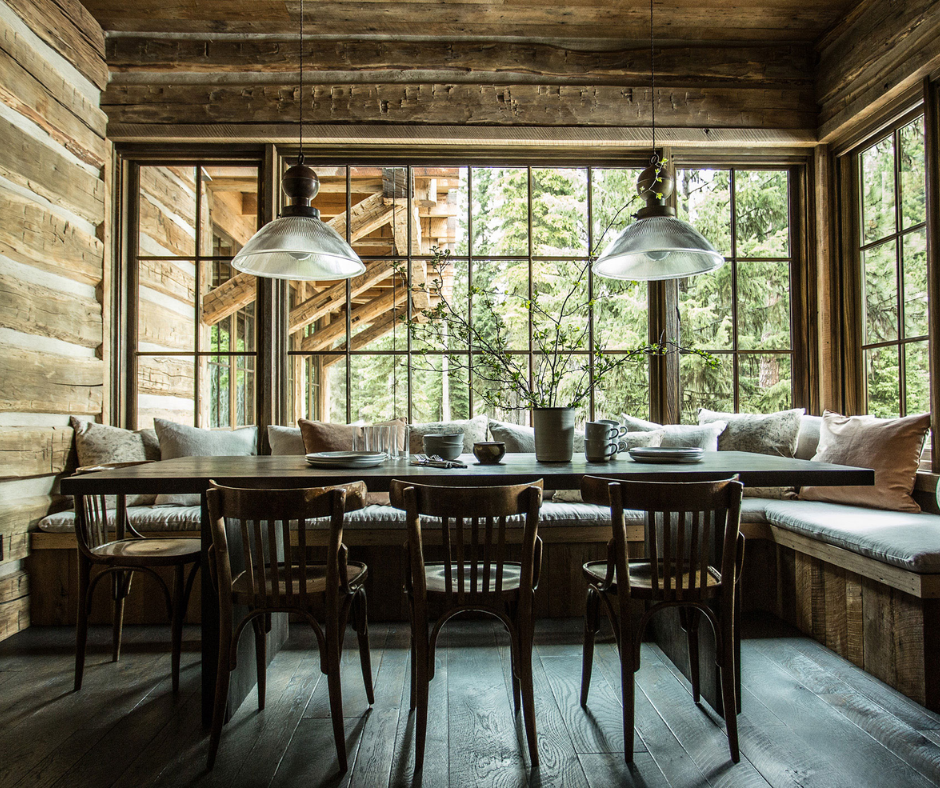
The History of Rustic Interior Design
The rustic style in interior design emerged more out of necessity, than a means of creative expression.
When early American settlers created their homesteads in rural lands located far from cities, they often traveled with little to no furniture or supplies. When they finally arrived to their new land, they needed to quickly build their homes and essential furniture with local natural materials such as clay, stone, and, of course, wood.
The raw and rugged elements of their interiors were far different from the more sophisticated architecture and design found in the cities of the era. Nevertheless, the raw character found in those simple establishments produced a warm and inviting atmosphere still coveted today.
Rustic Interior Design Style Today
Rustic interior design has come a long way from the pioneers’ need to shelter their families. Today, the style embraces all the natural elements to create truly beautiful and stylish spaces.
The organic feel produced by features like raw wood, stone, and earthy colors, creates a warm, relaxing and inviting space.
Bringing the outdoors in is also a design goal of the rustic style, as well as mixing different textures with new and vintage furnishings to create a space that is unpretentious all the while being full of character.
Rustic Interior Design Is Your Thing If…
- You’re a sucker for reclaimed wood—the older the better.
- To you, the perfect home is a log-home, or at least one that looks like a log-home.
- When you get home, all you want to do is kick your boots off and sit by a crackling fire.
- You own a collection of vintage glassware, dishes, and anything else vintage you can get your hands on.
- Sturdy, natural fabrics like burlap, linen, cotton, and wool are totally your thing.
Modern Farmhouse Interior Design
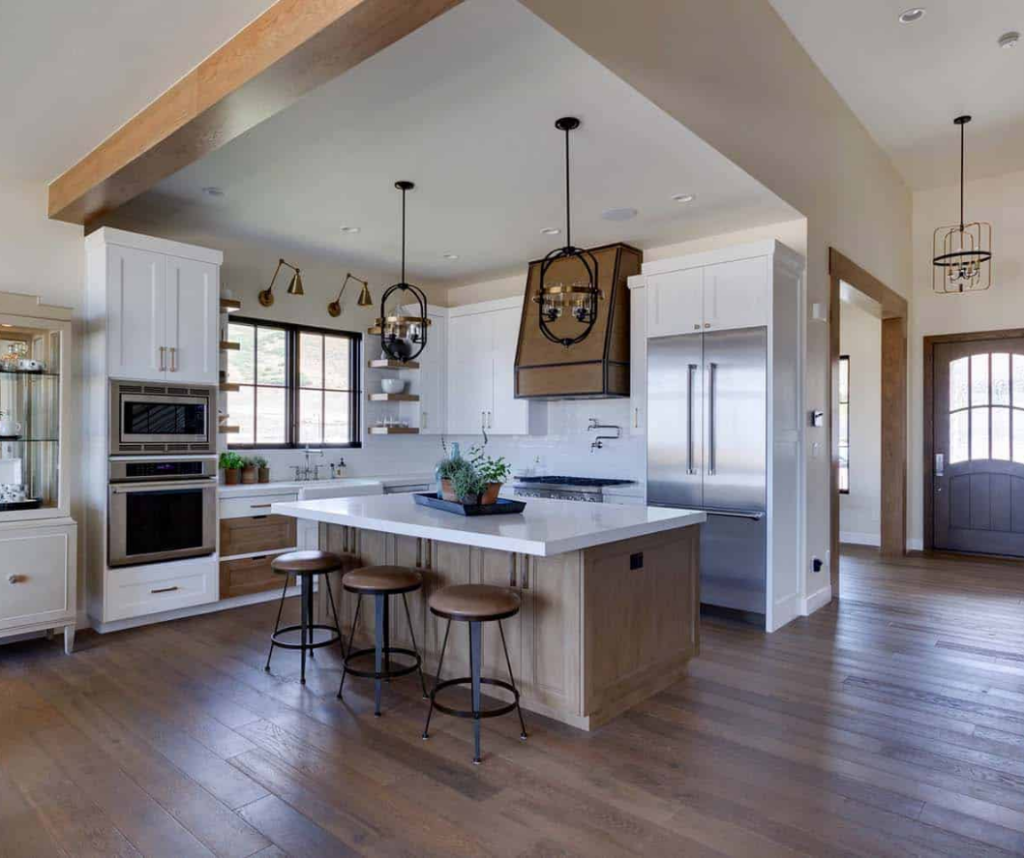
The History of Modern Farmhouse Interior Design
The history of traditional farmhouse design dates back centuries, originating from the practical needs of agricultural families. These structures were built with functionality in mind, featuring simple layouts and durable materials suited for rural living. Elements such as pitched roofs, wide porches, and large windows were incorporated for both utility and aesthetics. Over time, regional variations emerged, reflecting cultural influences and available resources.
Then, in the early 2000s, the Modern Farmhouse style emerged, combining the traditional farmhouse aesthetics with modern conveniences and design.
At the turn of the millennium, there was a surge in technological advancements, particularly in the fields of robotics, the Internet, and mobile phones. However, the more people were getting “virtually connected”, the more they felt disconnected from their natural environment and cultural roots. As a result, many individuals began yearning for a simpler way of life. This nostalgia for “the good old days” started to manifest itself in people’s homes and living spaces, making space for the modern farmhouse trend to rise.
The modern farmhouse interior design style would not have been the same without the influence of home renovation experts Chip and Joanna Gaines. The signature style of the “Fixer Upper” stars blended rustic and traditional farmhouse elements with contemporary and even industrial design, creating a harmonious fusion between old and new. Their method of integrating architectural features such as shiplap walls and reclaimed wood beams into any kind of space, allowed even the most urban dwellers to add a touch of the countryside into their homes.
Classic Farmhouse VS Modern Farmhouse Design
When you think of a farmhouse, it’s hard not to imagine a picturesque 1800s American farmhouse. The traditional farmhouse style borrows a lot from the rustic interior design style, but it adds more feminine touches, such as floral patterns and softer fabrics.
Here’s an image of a traditional farmhouse design. While some elements might appear similar to modern farmhouse design, it feels much cozier and more traditional than the example of a modern farmhouse design shown in the image above. Also, modern farmhouse design tends to gravitate towards open concept layouts, whereas the classic farmhouse design leans on a more traditional layout of separation between living spaces.
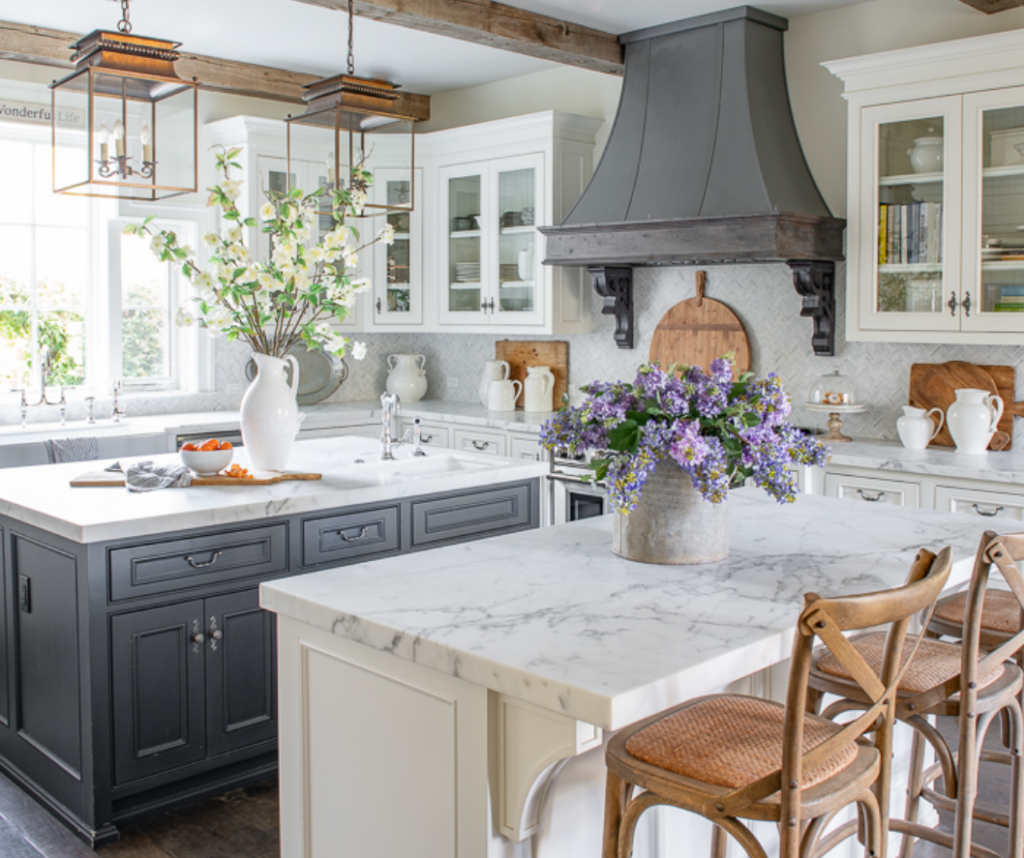
Modern Farmhouse Interior Design Style Today
Modern Farmhouse design style is characterized by a blend of contemporary elements with rustic, traditional features. It combines clean lines and neutral colors with natural textures such as wood and metal, to create a warm and inviting space. This style often incorporates vintage pieces and reclaimed materials to add a sense of history and nostalgia to a space.
The overall modern farmhouse aesthetic is a perfect balance of modern simplicity and rustic charm, creating a cozy yet stylish atmosphere in any home. In recent years, the style has moved away from the “American homestead” look, getting inspiration from both the England and French countryside, creating a timeless appeal that exudes both old-world charm and sophistication.
Modern Farmhouse Interior Design Is Your Thing If…
- High ceilings, open spaces, reclaimed wood beams, steel framed windows, and at least one textured wall surface are all must-haves in your dream home.
- You feel that mason jars are perfectly acceptable decor items.
- Filling your home with wall signs, jute rugs, dried flowers, hand woven baskets, and candle lanterns makes you happy.
- When people visit your home, you want them to feel transported to a place that is somewhere between a NYC loft and a cottage in the countryside.
Coastal Interior Design
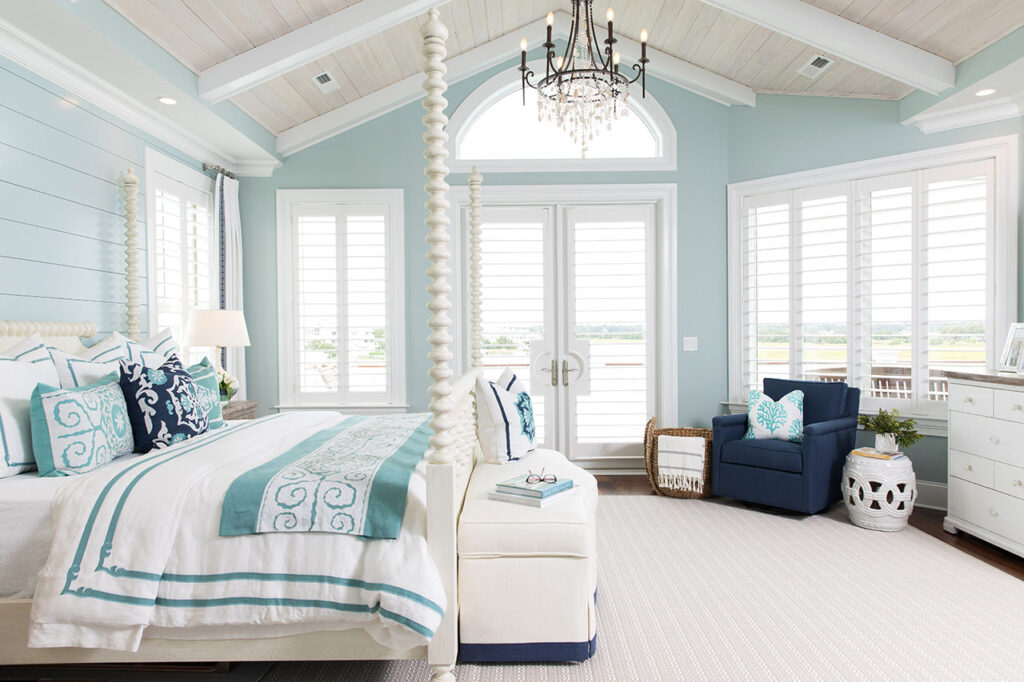
The History of Coastal Interior Design
It’s hard to pin down a specific era when coastal design emerged. Humans have always lived near water, and the beauty of this natural element has most likely influenced their interiors since the beginning of time.
That being said, although living near water was once a thing of necessity, in the last few centuries, it has become a luxury for the wealthy. The construction of luxurious beach and lake vacation homes has had a more significant impact on the coastal design style than the original fishermen who first settled near the water.
After all, coastal towns like the Hamptons, Sidi Bou Said, Key West, or Positano are known for the unique interior design and architecture that accompanies the opulent properties that grace their renowned shorelines.
Coastal Interior Design Style Today
Coastal interior design integrates natural elements, light color palettes, and casual furnishings to evoke a sense of the seaside. Incorporating materials like weathered wood, wicker, and linen, this style creates a relaxed and airy atmosphere.
The color scheme mainly consists of soft blues, greens, and sandy neutrals, which enhance the feeling of tranquility and serenity.
To further reinforce the coastal theme, nautical elements such as rope accents, striped patterns, and seashell decorations can be added.
Additionally, light and breezy fabrics like sheer curtains and slipcovered furniture add to the overall laid-back aesthetic, making coastal design a popular choice for those seeking a calming and beach-inspired home environment.
Coastal Interior Design Is Your Thing If…
- The sight of a billowing white curtain swaying gently in the warm breeze is your idea of paradise.
- Bright and airy is your thing, but your space needs to feel sophisticated.
- You melt for a color palette that combines soft blues and greens.
- No matter where you are in the world, your heart always yearns for the beach.
Fusional Interior Design Styles
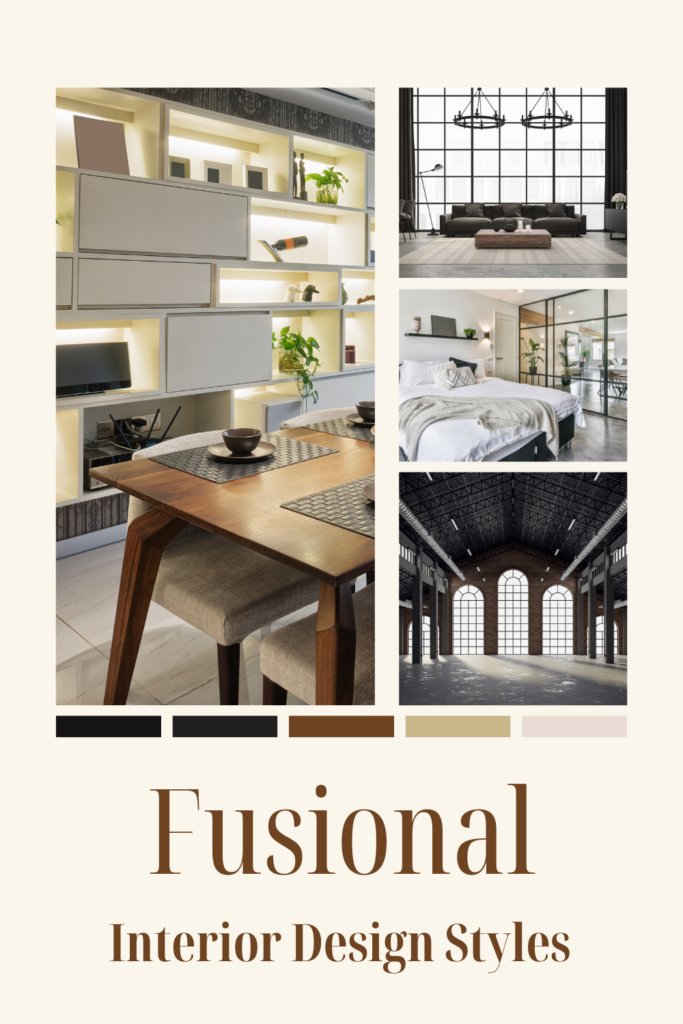
In the final design style category, we will be exploring what I refer to as the “fusional” category.
These design styles are all about combining elements of one or more styles to achieve a trendy and often edgy ambiance. The aim is to create spaces that are both stylish and up-to-date.
The design styles in this category include:
Industrial Interior Design
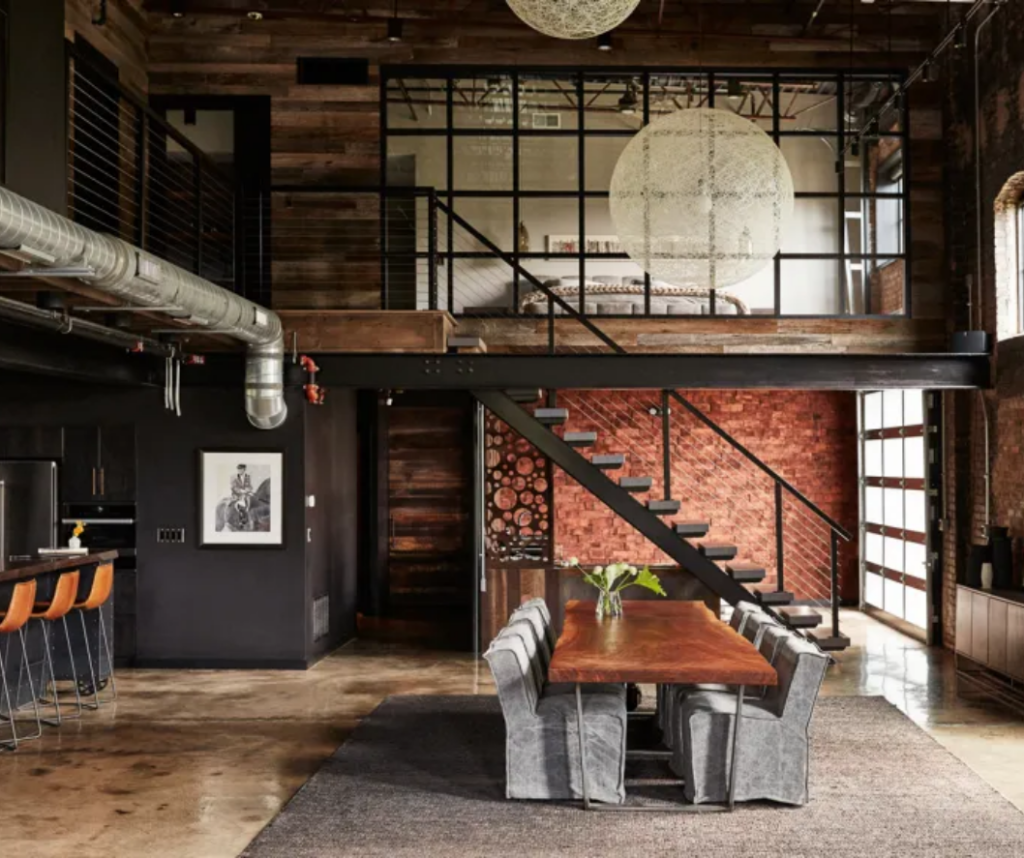
The History of Industrial Interior Design
The industrial interior design style originated in the 1960s when old factories and industrial spaces were repurposed into living spaces, emphasizing raw materials found in those existing spaces.
This design aesthetic embraces imperfections and celebrates utilitarian objects like metal furniture and iron lighting fixtures. The industrial style gained popularity in the early 2000s with the rise of loft living and the desire for a modern, urban look. Today, it remains a popular choice for homeowners and businesses seeking a current and edgy atmosphere.
Industrial Interior Design Style Today
The industrial interior design style is characterized by a raw and unfinished aesthetic that showcases exposed brick walls, steel beams, and concrete floors. The color palette usually consists of neutral tones like gray, black, and white. Open spaces and high ceilings are common features, often incorporating elements like metal light fixtures and reclaimed wood furniture. This style embraces the beauty of imperfections and often highlights mechanical details like pipes and ductwork.
Industrial design often incorporates vintage or rustic items to create a rough, edgy aesthetic. Some designers will argue that the style combines modern and farmhouse aesthetics.
Industrial Interior Design Is Your Thing If…
- You’re all about highlighting the structural character of a space.
- To you, the higher the ceilings, the better.
- Others might like shiny things, but you love untreated, raw finishes.
- Natural fabrics are your thing.
- You love repurposing materials to furnish your space.
Contemporary Interior Design
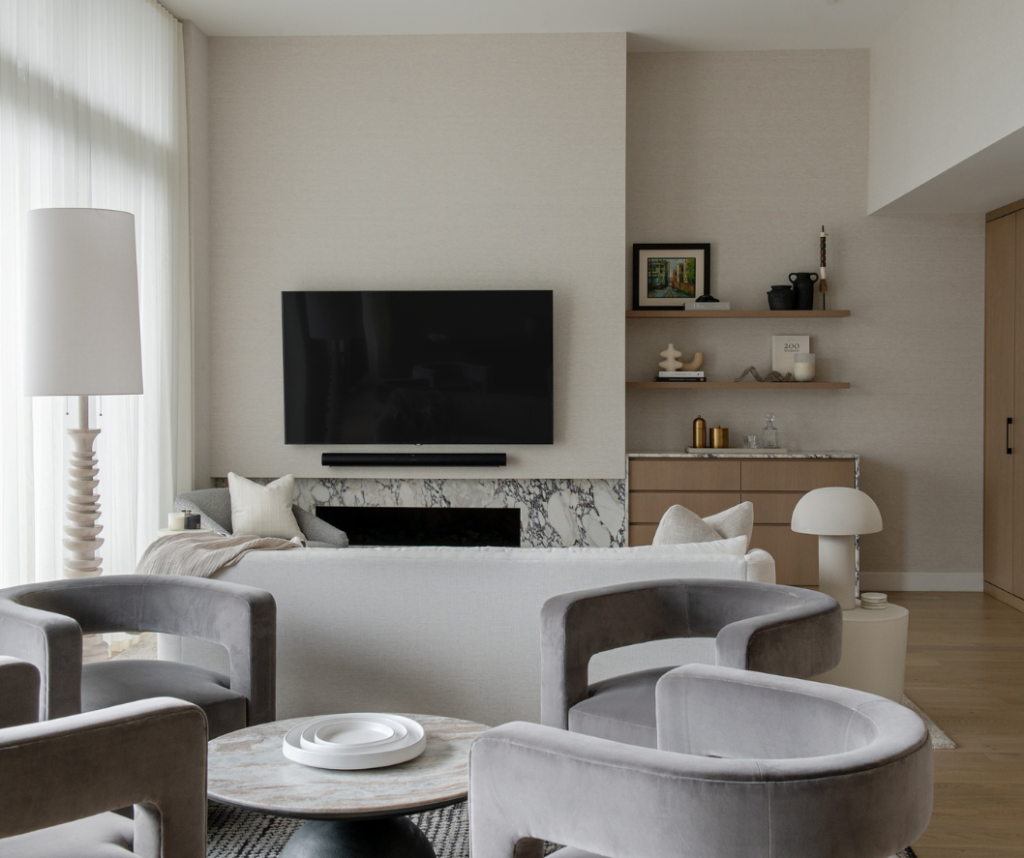
The History of Contemporary Interior Design
In the 1970s, a new interior design style emerged, known as contemporary design. This style was characterized by a fusion of various popular aesthetics of the time, drawing inspiration from Modernism, Postmodernism, De-constructivism, Art Deco, Futurism, and more.
Over the years, contemporary interior design has evolved as a forward-thinking and on-trend style that incorporates new ideas and continuous innovations.
Contemporary Interior Design Style Today
The contemporary style combines various popular styles of the moment to achieve a look that is unquestionably “in”.
Unlike other styles that are often rooted in a particular look, time, and spirit, the key to contemporary design is that it is ever-evolving. This means that a contemporary home will evolve over time, and, without regular updates to current trends, it can become outdated quickly.
Contemporary Interior Design Is Your Thing If…
- Following the latest fads and trends is your joie de vivre.
- Creating a space that feels both fresh and modern is important to you.
- You’re all about the latest innovations.
- Integrating tech in your space is a must.
- To you, design is all about looking to the future.
Transitional Interior Design
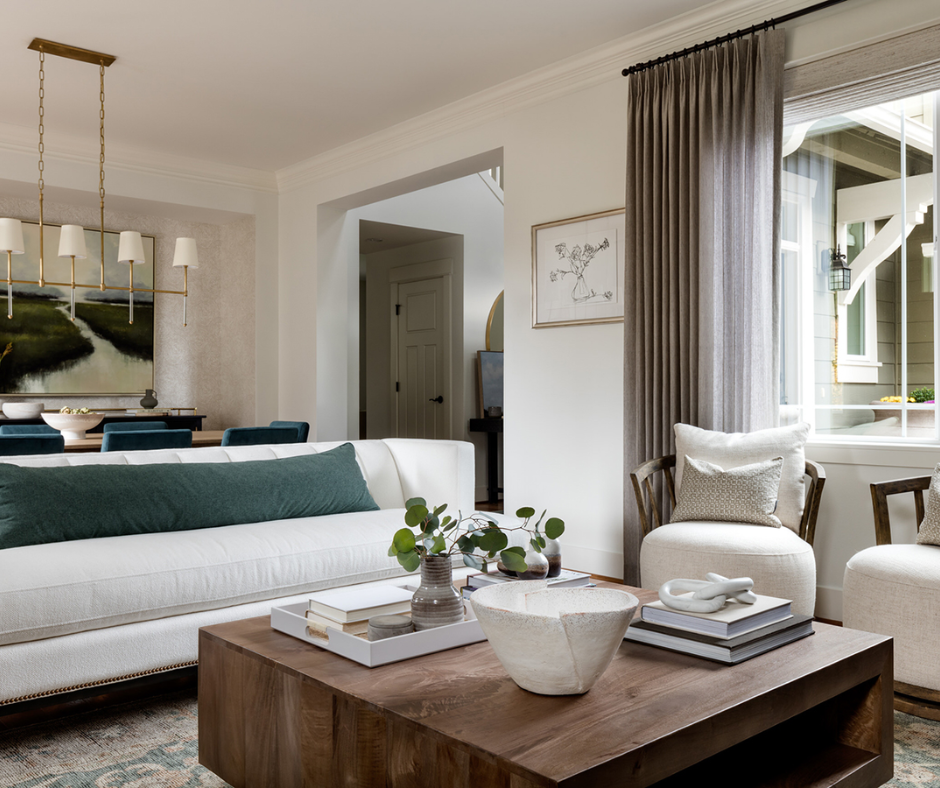
The History of Transitional Interior Design
Transitional interior design combines traditional and contemporary elements to create a timeless aesthetic that adapts to evolving tastes. This design style emerged in the late 20th century as a response to the rigidity of traditional design and the starkness of modern design.
Transitional Interior Design Style Today
Transitional interior design is a popular style that seamlessly blends traditional and contemporary elements to create a timeless and elegant aesthetic. The core idea behind this design style is to combine the warmth and classic elements of traditional design with the clean lines and simplicity of modern design, resulting in a sophisticated, versatile, and balanced interior space that appeals to a wide range of tastes.
Some of the key features of transitional interiors include neutral color palettes that create a calm and soothing atmosphere, understated patterns that add texture and depth, and a mix of materials and finishes that create visual interest and contrast. Furniture pieces in transitional design are often a combination of both classic and contemporary styles, creating a cohesive and harmonious look.
Transitional design also emphasizes comfort and functionality, with a focus on creating a welcoming and inviting space that feels both familiar and fresh. This is achieved through the use of comfortable seating, soft lighting, and thoughtful accessories and decor. Overall, transitional interior design is a versatile and elegant style that can be customized to suit a variety of preferences and lifestyles.
Transitional Interior Design Is Your Thing If…
- Combining traditional architectural features like crown molding with more modern furnishings is your idea of a dream home.
- The look of a staged model home is exactly what you would like your home to look like.
- You can’t really decide on any specific look or style.
- Versatility, comfort, and functionality are all important factors to you when designing a space.
Combining Interior Design Styles Together
Understanding the techniques used to achieve different interior design styles can help you create new styles that match your taste. In fact, many trending styles today are a result of blending different aesthetics together.
For example, combining the rustic vibes of the southwestern United States with the bright and airy simplicity of Scandinavian design creates a style known as “desert modern”.
Likewise, merging the organic, airy energy of coastal design, with the laid-back bohemian aesthetic and a touch of retro that comes with the mid-century modern style, results in a style called “California boho”.
A final example can be found in blending elements from the traditional farmhouse style with earthly elements like stones and rocks found in rustic design, then adding a dash of bohemian aesthetic with a sprinkle of hyper-feminine touches and you create a style known as “cottagecore”.
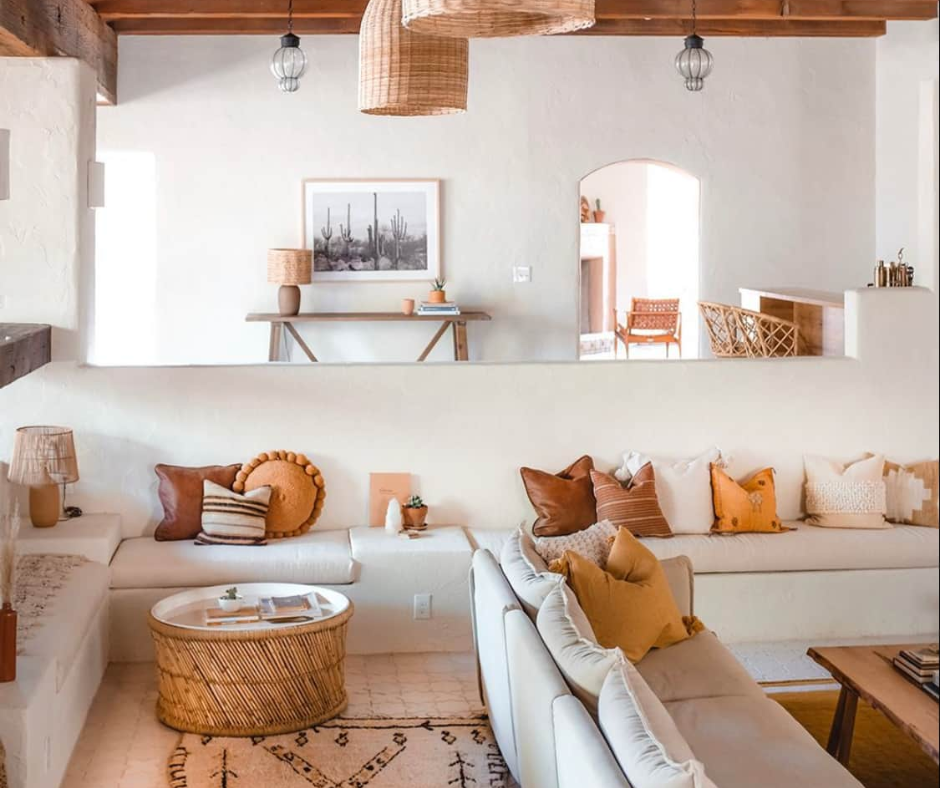
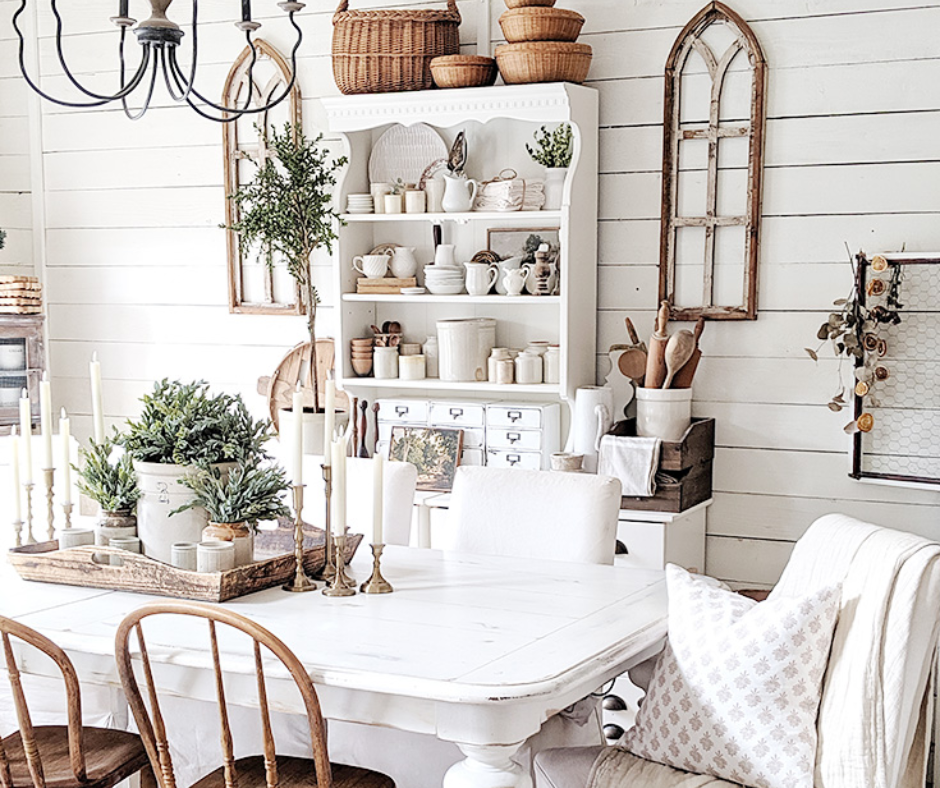
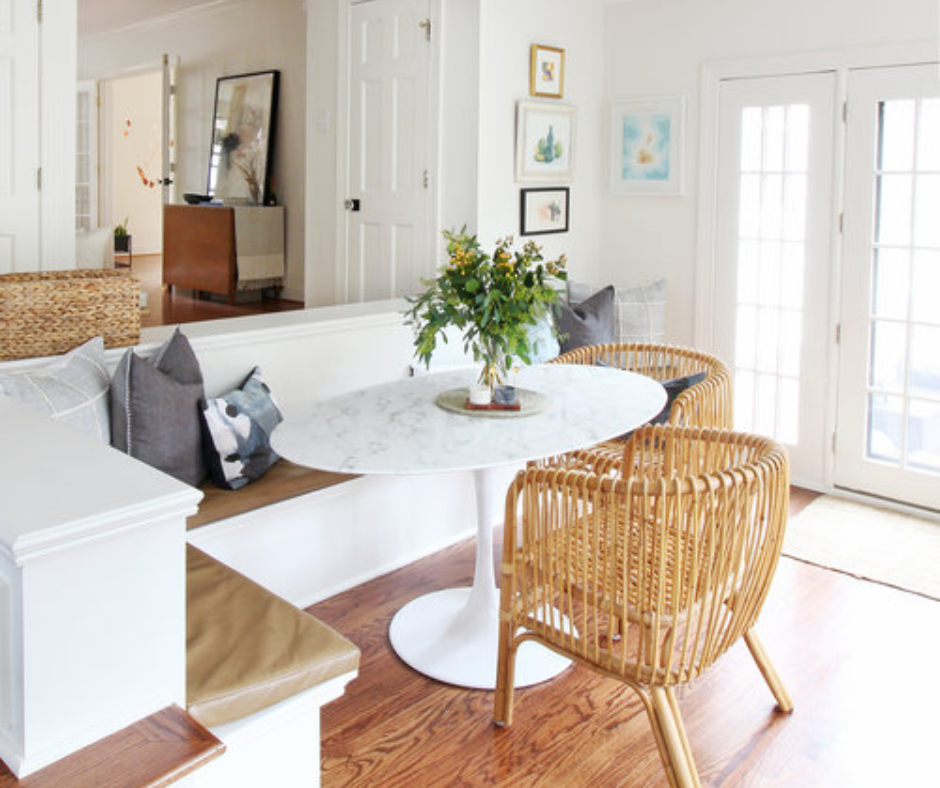
Unveiling the Essence of Different Interior Design Styles
As you can see, the possibilities are infinite. All you need to do is find the elements that speak to you and your lifestyle preferences and dare to take a chance on style. Perhaps you will unleash your creativity and transform your space into a personalized sanctuary that truly feels like home.
Are you struggling to find an interior design style that speaks to you and your family? I’d love to help you find your way in the myriad of design possibilities!
Talk soon,
The Working Stay at Home Mom
Leave a Reply
heads up!
This site may contain affiliate links. As an Amazon Associate I earn from qualifying purchases. Please read the WSAHM disclaimer page for more information.
The advice on this site is general in nature and will need to be adjusted to your personal situation. If you have any concerns, please consult a trained professional such as your doctor or healthcare provider. More on this here